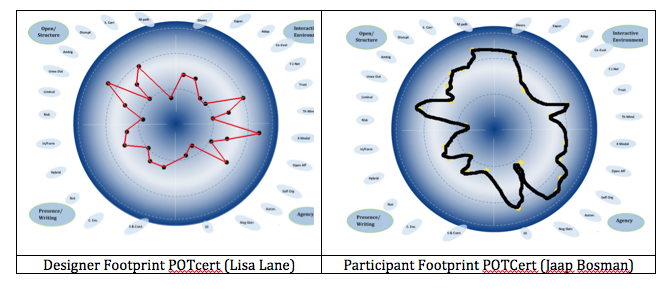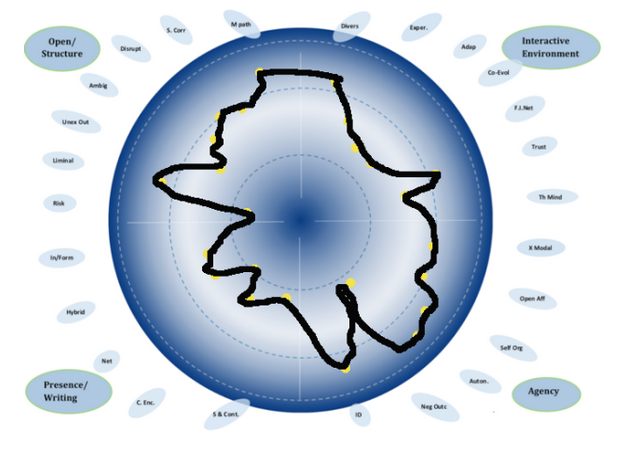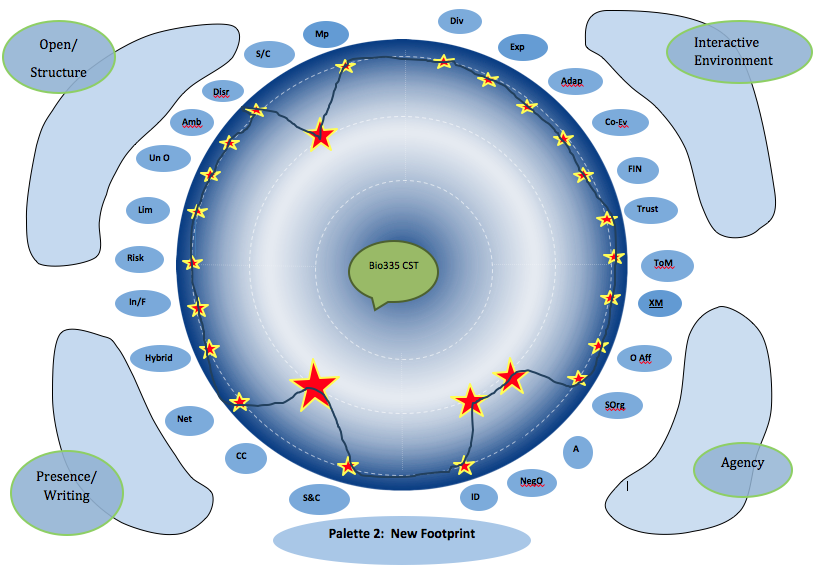Hi Jaap - looking forward to seeing your POTCert footprint. I expect it will be of interest to Lisa and Scott too.
There are two ways in which you can approach the scoring. You can actually assign a number to each of the factors using the scoring sheet attached. (Some of the wording in this scoresheet might be slightly different - as we are constantly working on the vocabulary we use - but they are essentially the same). This is how we started drawing the footprints and Jutta Pauschenwein still prefers to draw the footprints in this way.
After much discussion we decided that scoring the footprints numerically was not possible to do with any degree of accuracy. My question was always - well should this factor be 14, 15 or 16 - and so on for the other factors.
This is how I approach it now.
For each factor I consider whether it should be in the prescrsiptive zone, the sweet emergent zone, the edgy/scary emergent zone or on the edge of chaos.
Having decided this I position the point within the zone according to whether I think there was more or less emergent learning. If more then I place the point nearer the outer edge of the zone, if less thit is nearer the inner edge of the zone.
I think it is inevitable that the way in which the footprints are scored will depend on prior experience. For example, if I am very familiar with the openness of cMOOCs, I am not going to find the learning as disruptive as someone who is new to MOOCs.
Looking forward to seeing your footprint. Very interesting that you have translated the factors into Dutch. Roy might have mentioned soemwhere that Jutta also translated them into German - see her blog - http://zmldidaktik.wordpress.com/



